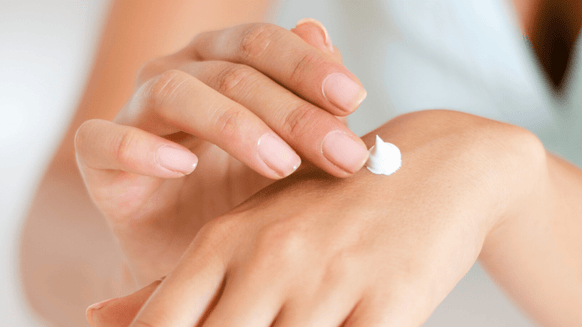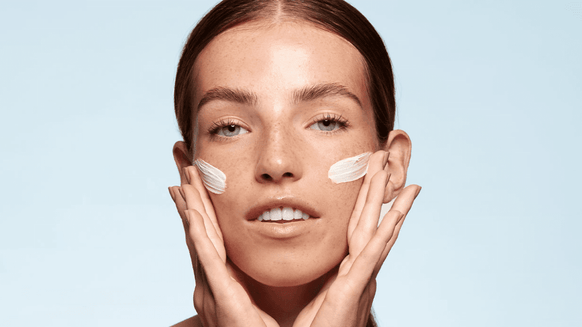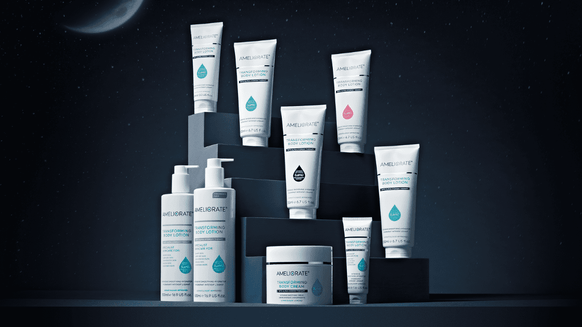How to Get Rid of Dry Patches on the Face

There’s no task quite like applying make-up to dry skin. Despite advances in foundations and brushes, rough texture cannot be concealed. In fact, makeup tends to cling to dry patches, drawing the eye towards them. Not only this, but dry skin can be uncomfortable. That tight, itchy, confidence-knocking feeling. We’ve all experienced it, no matter what the skin type. Keep reading to discover how to get rid of the dry patches on your face.
What causes dry skin
Whether a heavily air-conditioned office or freezing weather conditions, environments with low humidity dehydrate our faces. Other causes of dry skin include long hot showers and skin products with harsh ingredients, especially when used with a skin condition like psoriasis or eczema.
Use a gentle exfoliating cleanser
It can be impossible to avoid what causes dry skin
Use a serum for extra hydration
Mistakenly given the reputation as a superfluous addition to the skincare routine, a hydrating serum is an essential step for skincare. Serums work by infusing nourishing ingredients into the skin. As hydrating as they may be, they should not replace a moisturiser! They are their own, equally important step.
The ingredients in serums such as hyaluronic acid help the skin to repair from damage, getting rid of those dry patches on the face. Ameliorate's Transforming Facial Serum also multifunctions as a hydrator whilst stimulating the exfoliated cells to renew themselves. The result is moisturised, radiant-looking skin, dry patch free.
Try a ceramide moisturiser
Once your hydrating serum has been absorbed by the skin, follow with a ceramide moisturiser to seal the hydration into place. A moisturiser or day cream including ceramide is the most important step if you're spending time in those dehydrating conditions that were mentioned previously. These moisturisers create a layer over your skin to trap water in and act as a protective shield from the dry air.
What does ceramide do for the skin?
Many skincare products these days cite hyaluronic acid as the most important ingredient for hydration. You may be caught between two wondering, hyaluronic acid or ceramide? The answer is both. When combined, as in Ameliorate's Replenishing Facial Cream, these two ingredients are the key to hydrated, plump skin. Hyaluronic acid adds moisture to the face while ceramide locks it in place.
Try an overnight face mask for intense hydration
Now that these steps have been implemented into your routine, you're on the road to getting rid of those dry patches and a step closer to the fresh-faced glow. As a final step, try an overnight face mask. Not only are face masks self care at it's finest, an overnight face mask has all of the ingredients to not only get rid of dry patches, but entirely protect against what causes dry skin.
The hyaluronic/ceramide duo is accompanied by a blend of high-performance active ingredients that help to increase and protect skin hydration whilst smoothing and nourishing. An overnight face mask is the perfect way to set a plump base for makeup application the following morning.
Should you apply moisturiser to wet skin?
Finally, let's address the claims that moisturiser works better when applied to wet skin. Some swear by it, however, the thought of applying moisturiser to wet skin might seem counter-productive. The diluted product may slip and slide all over, seeming like none of it is actually getting onto the face. We're here to confirm that there is, in fact, logic behind applying moisturiser to wet skin- to a certain extent.
Prep the face with a spritz of water so it's damp before applying the product. Not only does damp skin absorb the moisture better, but the role of moisturiser is to lock water into the face. Therefore the hydration from your damp skin will be sealed into place. The same applies for the rest of the body. Pat dry with a towel but leave a few drops of water before lotioning up.
Once you have your hydration essentials added into your skincare routine, you'll have one less thing to worry about come winter. Stay plump and flake-free all day long, no matter what the weather.
Shop This Post:

Josie is an Online Beauty Editor with a Bachelor of Arts degree in Journalism. Her passions involve all things skincare and beauty and in her free time she likes to travel, read and get her beauty sleep.











